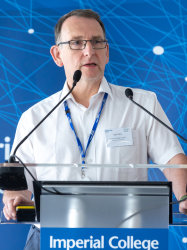BibTex format
@article{Harris-Birtill:2017:10.1371/journal.pone.0185990,
author = {Harris-Birtill, D and Singh, M and Zhou, Y and Shah, A and Ruenraroengsak, P and Gallina, ME and Hanna, GB and Cass, AEG and Porter, AE and Bamber, J and Elson, DS},
doi = {10.1371/journal.pone.0185990},
journal = {PLoS ONE},
title = {Gold nanorod reshaping in vitro and in vivo using a continuous wave laser.},
url = {http://dx.doi.org/10.1371/journal.pone.0185990},
volume = {12},
year = {2017}
}

